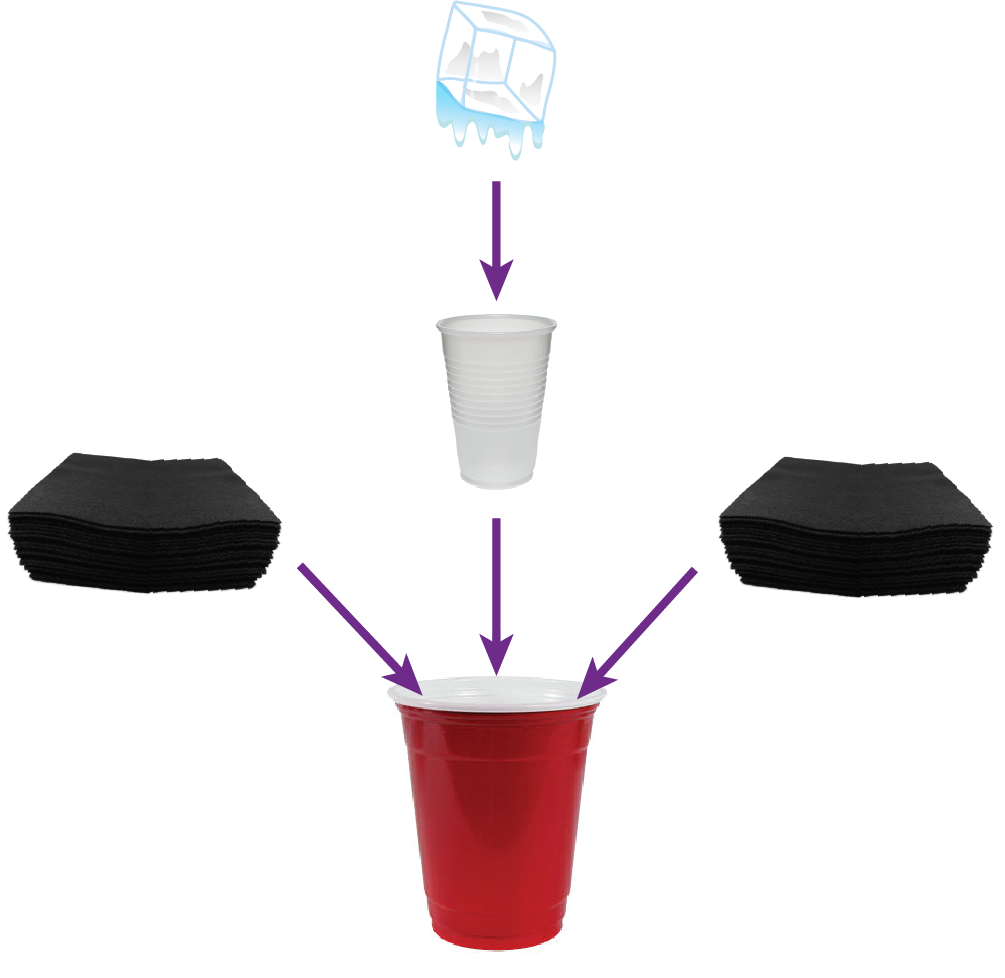Refrigerated Rail Car Inquiry Unit
Testing Insulation for Refrigerated Rail Cars
Prompt for the students:
Joel Tiffany has just hired your team to engineer his first Tiffany Refrigerated Rail Car. He needs you to determine which insulating material works best to keep the ice as cold as possible for as long as possible so that the rail car maintains a cool temperature. What you discover will help
him decide what materials to use in the walls of his rail car. The materials he has in his workshop are polystyrene (Styrofoam), felt, and cotton.
To help Mr. Tiffany with his decision, test each of the materials to find out which can keep the ice frozen for as long as possible. [Alternatively, you can ask your students prior to this activity what materials they think will be a good insulator and use those materials instead of the ones listed below. Feel free to add or subtract the number and/or kind of insulating materials you/your students want to test. Note that you will need a large and small cup for each insulating material you wish to test.]
MaterialsPer group/student:
For whole class to share:
|
 |
Procedure
- Gather and organize materials
- Students should place a small layer of each insulating material on the bottom of 3 of the large cups. The fourth cup is the control and does not get any insulating material.
- Students should then place the smaller plastic cup in each of the large plastic cups.
- Next, the students should fill the rest of the open space in each large cup (around the smaller cup) with the appropriate insulating material. Remember the fourth cup does not get any insulating material.
- Students should then place an ice cube in each of the smaller cups.
- Cover each large cup (containing the insulating material and small cup with the ice cube in it) with plastic wrap.
- Check on the ice cubes in intervals convenient to your class schedule (until each ice cube is melted if possible). Ask students to share what is happening with each insulating material and which one they think is doing the best job and why. Ask them to think about other materials they think might do a better job.
- Students should record how many times they check on each ice cube before it melts completely and how much time has passed each time. They may use the attached chart to assist in recording this information. They should use the spaces to describe what they see each time they check on their ice cube.
- Relate this activity to the challenges of keeping perishable food cold for long distance rail trips.
OPTIONAL- Have students take a photo of each ice cube each time they check on it and come up with a creative way to show the progression from ice cube to water and how long the whole process took.
- Run this same activity during the next class period, but chill the smaller cups beforehand in a fridge or freezer. Ask your students what they think will be different in terms of amount of insulation required and amount of time the ice cube will stay frozen.
- You can run this activity again, except this time have the students wrap either the inside or outside cup with aluminum foil. Ask them which cup would be more beneficial to wrap and why. If two or more groups disagree, start a small competition to see which group is right!
When engaging in the IEEE REACH hands-on activities contemplated in the IEEE REACH lesson plans please proceed with caution and use all reasonable safety measures. All IEEE REACH hands-on activities are designed for classroom use only, with supervision by a teacher or an adult educator. Please be advised that IEEE shall not be responsible for any injuries or damages related to the use of these lesson plans or any activities described herein.
